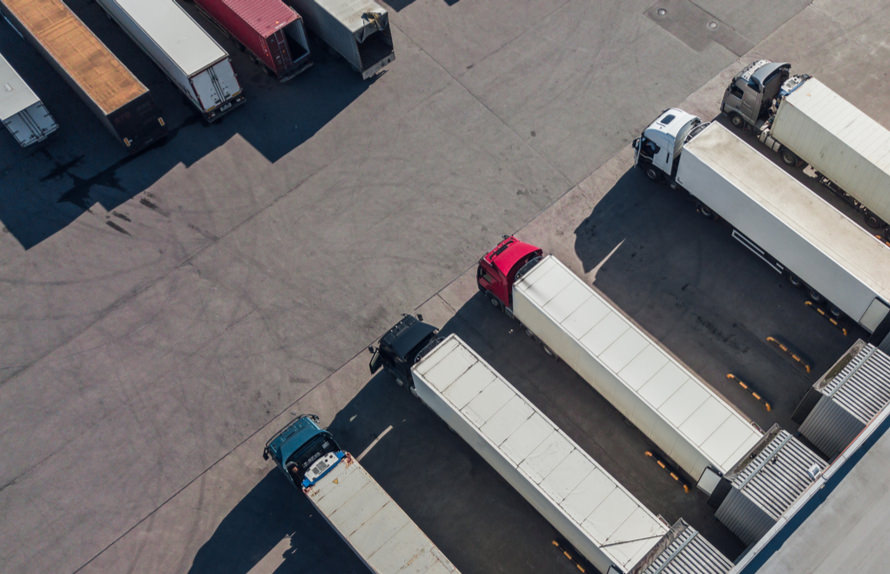
One of the biggest challenges for brands is deciding which sales channels will net them the highest sales volume for the lowest amount of resources (time, money, operational output). Online marketplaces can be a great place to get this, but it takes playing the platform correctly so that your product listing pages get maximum visibility.
Much of the effort to have success with online marketplace selling comes from the sales and marketing aspect of the channel. Getting your product listings right is key to catching the eyes of returning and potential customers.
Every online marketplace is different, but there are some outstanding ways you can ensure your product listings get seen. Here are some expert tips to keep your sales strategy strong.

Be on the Channel
Before you can optimize your presence, it’s so important to pick the right channel for your brand. Think about it. If all your competitors are on Amazon, but you’re not, consumers are probably finding their products and not yours. Having a presence is the first step to netting more customers.
Update Content Regularly
Compelling product listings will attract customers to click on your product pages. Think of this as the equivalent of having eye-catching product packaging in a store. When a customer browses the aisles and is immediately drawn to your product, they’re more likely to pick it up and buy it.
Don’t let them down once they get to your product page, continue to engage them by adding thorough descriptions, rich media, and compelling content.
Here are the main areas to focus on when updating content on your product listings:
- Accurate and comprehensive descriptions. Let your customers really know how to use your products, and what to expect.
- Eye-catching and relevant visuals. Use compelling images, videos and rich media to convey how your product is used and functions. Give customers a better understanding of your product.
- Clarity and organization of information. Get specific when detailing your product. Think through all of the specifications your consumers will need to cross-compare your products with others. Don’t leave your customers guessing.
It’s important to keep your content optimized, not just accurate. Platforms may change their rules about types of media that can be displayed (videos for example). Be sure to stay up to date on what you can include in your product listing, and always optimize for more clicks.
If you are selling on a platform that serves multiple countries, make sure you are getting your listings translated into the languages you need. It’s also important to present the correct currencies if you sell to multiple countries.
Automate Your Content
One very important aspect of optimizing content is automating everything you can. From language translation to promotion and sales language—the more you can auto-populate your listings the better.
This is especially true the more products you have listed. When you have many listings, it’s not sustainable to spend the time manually updating each one for every change you need to make.
There are many automation tools that you can use. Be sure you choose the right one that works with your platform of choice.
Win the Buy Box
What is the buy box? On some sites, like Amazon and Walmart.com, there are some listings that will be prioritized in search. Even if there are many listings that exist for the same product, the platform will only serve one of those products when a customer makes a relevant search. This prioritization is called the buy box and it’s a big promotional tool for brands who choose to go after it.
Here’s an example, a water bottle is being sold by four different vendors. Each vendor will have their own listing, even though the water bottle actually has the same ASIN code listed within Amazon’s fulfillment department. If a customer searches “water bottle” in the search bar, only one of these four listings will be presented to the customer.
Getting this prioritization (“winning the buy box”) can account for up to 90% of a product’s sales. But to get this promotion requires some things that may not be suited to your product or your brand. Often the marketplace will take that position for their own products as well, so trying to win the buy box may not be plausible. Many times the product that is the low-price leader will take the buy box because their product is the cheapest, and that may not be your brand’s strategy.
For the brands who do want to win the buy box, here are a few determining factors:
- Price. Low price usually wins the buy box, but it’s not the only factor.
- Ship speed. How fast you can ship your products is huge. Fast shipping will be rewarded by the platform itself, plus you’re more likely to receive positive customer reviews (which also increases the buy box potential!).
- Customer service. How fast you can respond to customer queries and issues looks very good in the eyes of the platform, and your customers.
Brands who might not want to lower their price too much, can opt to try and win the buy box for a select period. Maybe it correlates to a sales cycle or promotional period, the holidays, or other seasonal times of year.
There are also tools that can help you manage the factors that go into winning to buy box. For example, tools that can help reprice your products according to how other competitors are priced.
The cool thing is that DCL supports both approaches (Amazon seller central and Amazon vendor central), and frankly it’s been really transparent with DCL in terms of being able to kind of compare the pros and cons of both of those fulfillment options and be able to figure out what the right solution is for us.
Increase Your Shipping Speed
If content is of primary importance to catch the eye of potential customers, shipping speed is next in line to net them as returning customers. Online marketplaces are synonymous with speedy shipping (thanks, Amazon!). If you cannot provide your products to customers quickly, you’re probably not ready for online marketplace selling.
If you’re not going to beat out your competitors with low prices, you definitely need to remain competitive in shipping speed. Online marketplace selling is the place is pays to bump your shipping services up to the faster option. Many consumers expect next-day or same-day delivery, depending on the product.
Get Quality Fulfillment Services
You may think that shipping is the only operational process that can really give you a leg-up. It’s not. Fast fulfillment affects the delivery time almost as much as the carrier shipping service you choose.
If your products are not in boxes, labeled, and on a carrier truck quickly, that’s added time from when your customers clicked “buy” to when they get their goods.
Partner with an experienced fulfillment provider, one who is already getting products to the online marketplace you want to sell on.
If you don’t have the capacity for quality and quick fulfillment in-house or with a third-party provider, some online marketplaces will take it on for you.
Amazon offers the most obvious fulfillment service. FBA (fulfilled by Amazon) is a very popular program that many sellers, both large and small, take advantage of. Other platforms might not have the same in-house fulfillment capabilities as Amazon, but many do work with third-party fulfillment companies to provide the service for their sellers.
Currency Conversion and Regional Support
There are many online marketplaces that serve a global population, but many are regional. Through a regional marketplace you may sell to customers within one country, other platforms have cross-border support because they serve a region that spans country borders.
In order to best serve your customers in all countries within the region, you’ll need to ensure your product listings are set up correctly. Here are a few regional support issues that need to be addressed:
- Currency conversion on the product listing page. You want your customers to see at first glance exactly how much they’ll pay for your product, don’t make them wait until checkout to see a conversion.
- Currency conversion at checkout. Before you get caught paying for the difference, be sure your back-end currency conversion is set up.
- Language translation on your product page is huge. If you sell to multiple different countries, make it easy for your customers to understand your products.
- Labeling language. Some countries have specific label requirements, and you may need to ensure you have correctly translated your labels for import.
Set up automation where you can, to help make these adjustments easier. If you rely on manually translating and updating all product listing pages, you’re bound to have some errors.
If you’re looking for online marketplace fulfillment support, we’d love to hear from you. At DCL we have years of experience supporting high-growth brands sell through many online marketplaces. Learn more about our Amazon fulfillment services, or check out the many companies we work with to ensure great logistics support.
We own and operate facilities in The Bay Area, Los Angeles, and Kentucky. Use DCL’s national footprint of warehouses to distribute your inventory across the country to reduce transit times and save on shipping costs.
Tags: Online Marketplace







